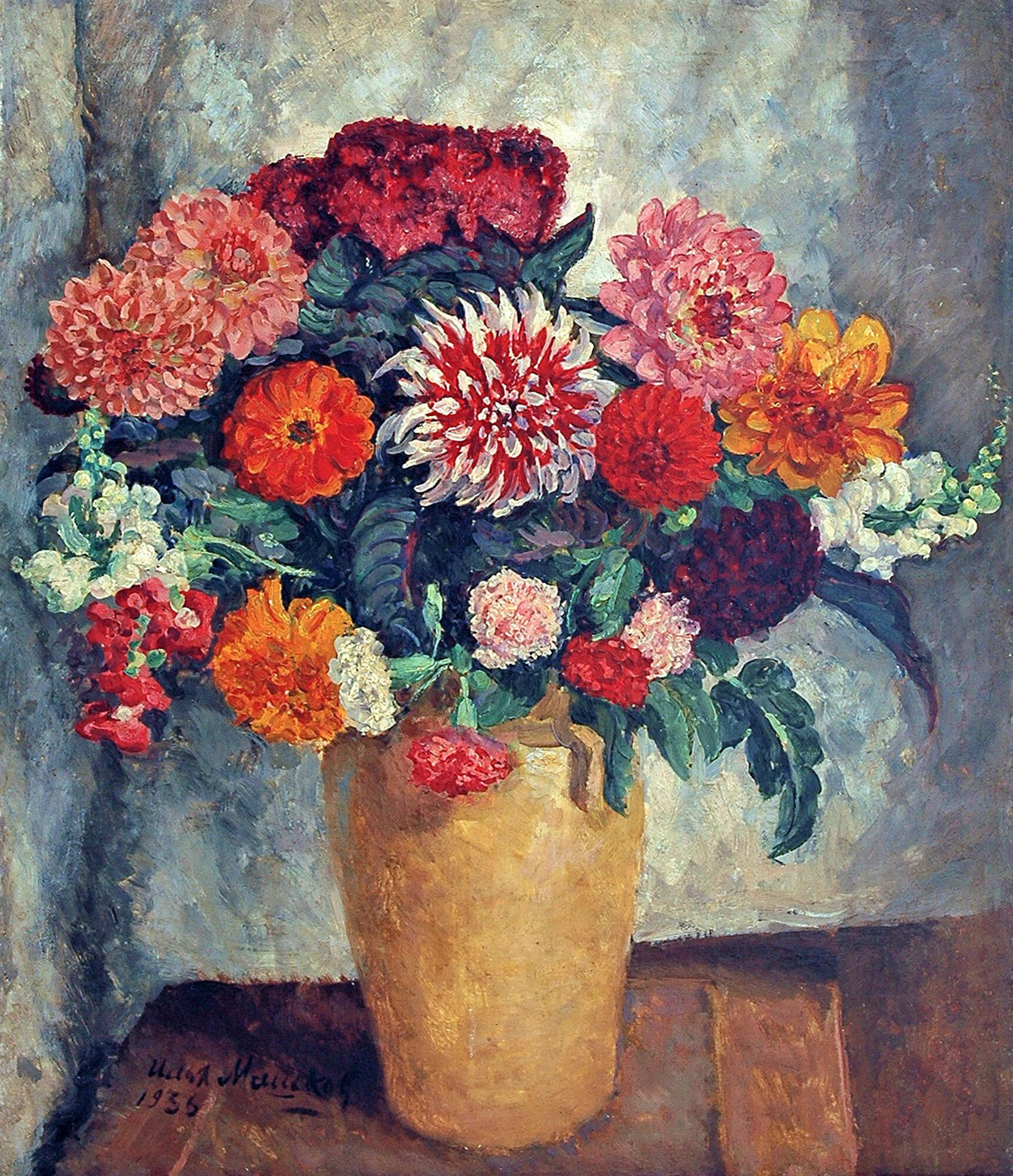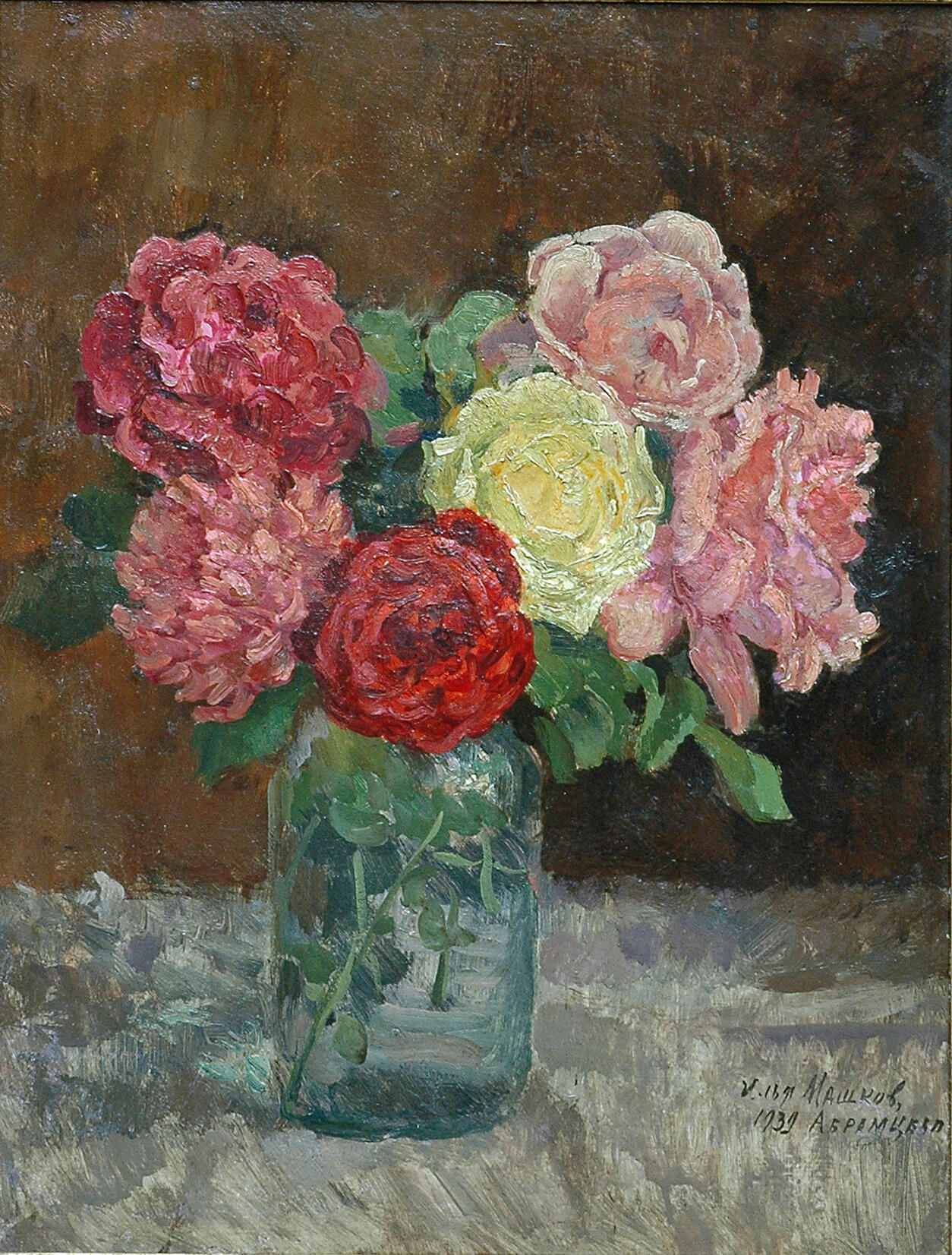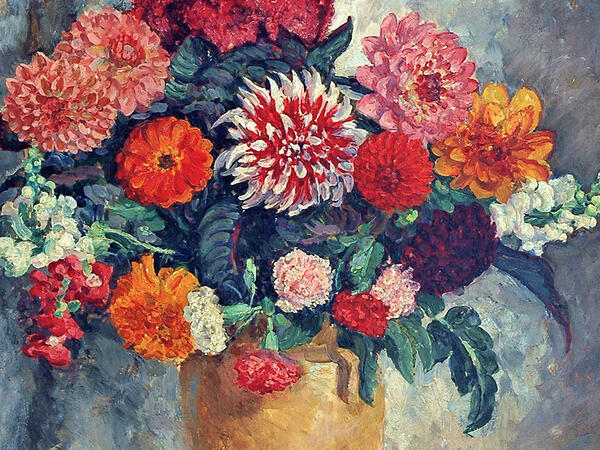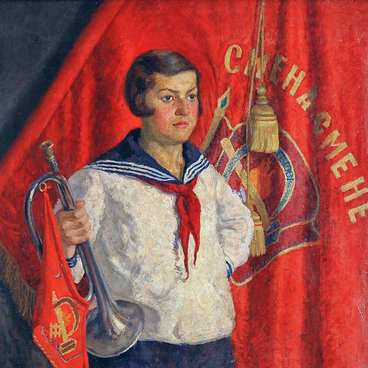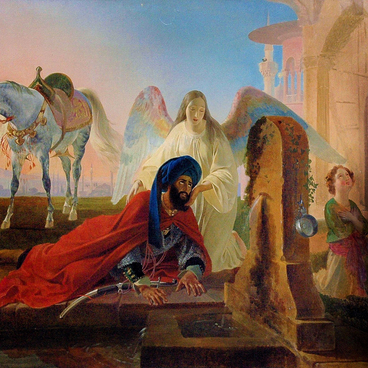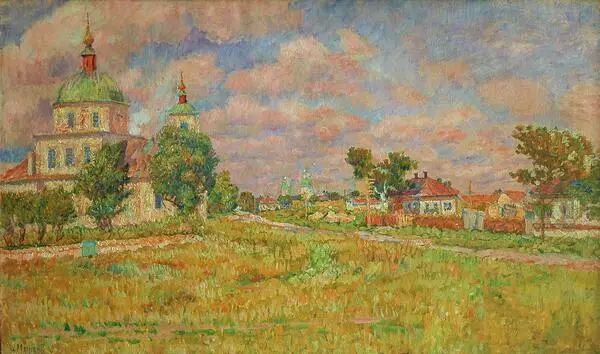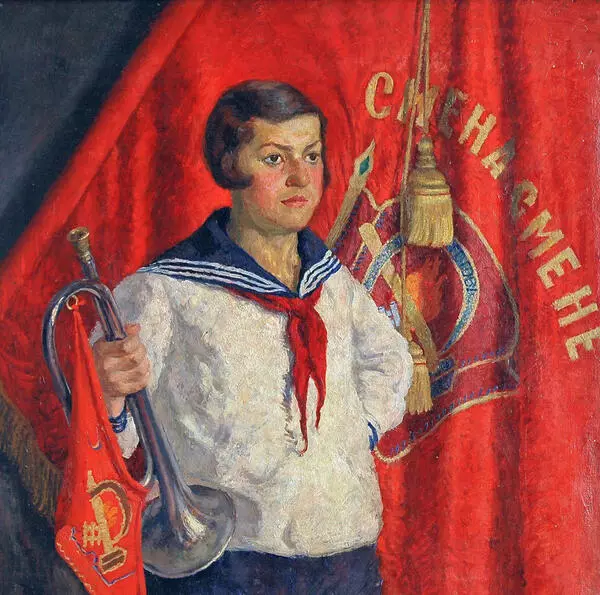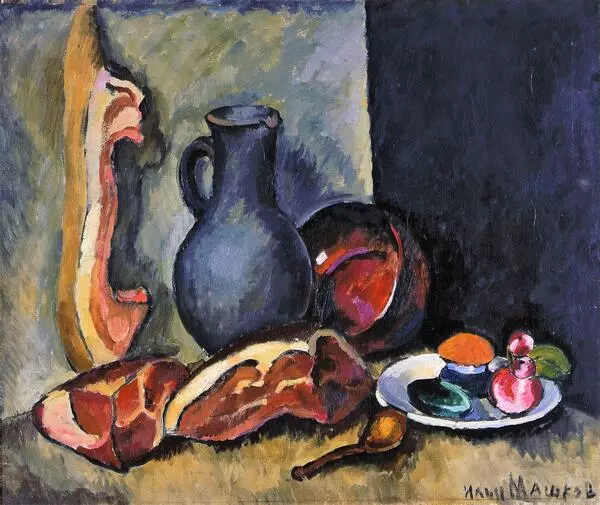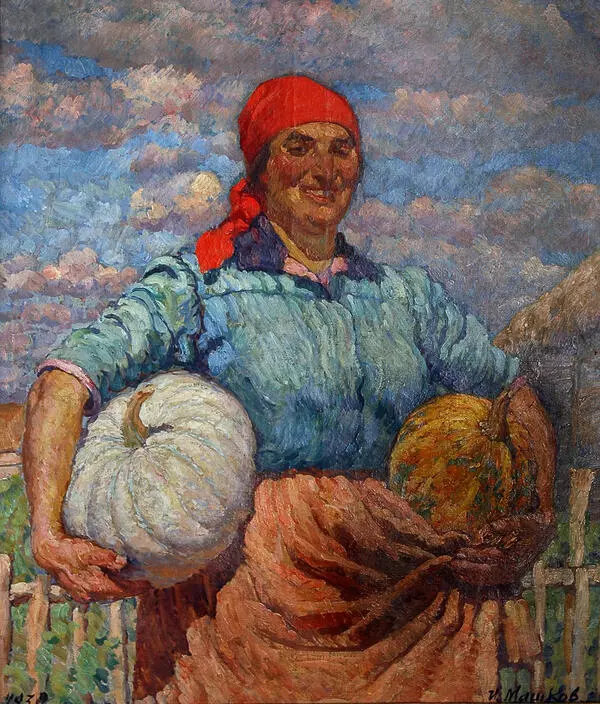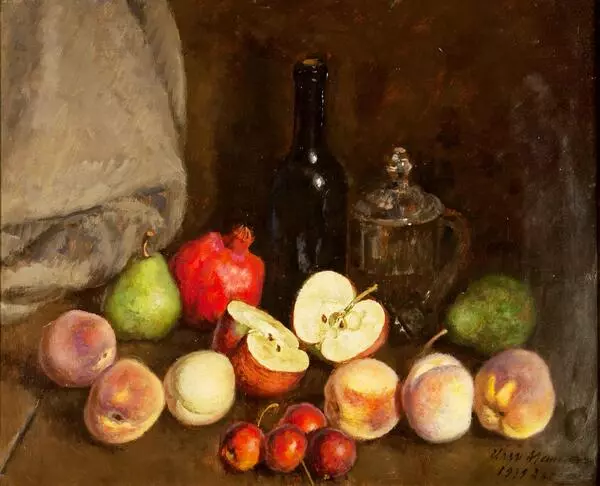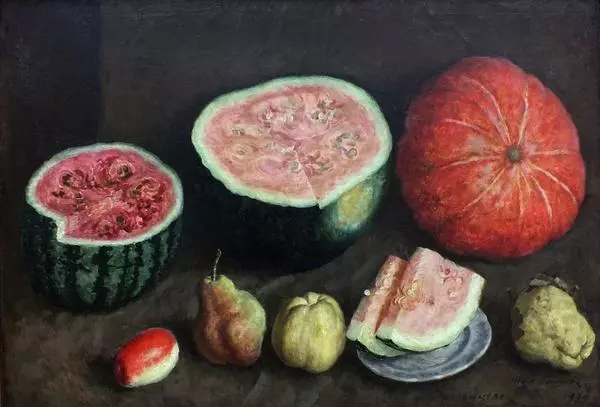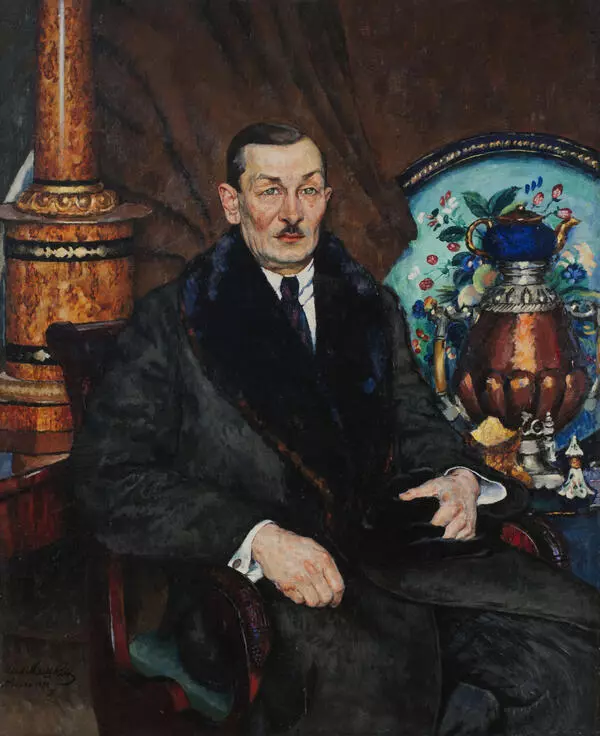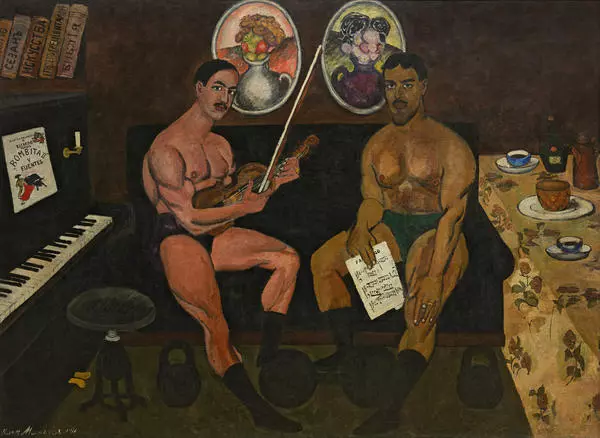The painting ‘Colorful Bouquet in a Clay Jug Against a Light Background’ is a part of a series of still lifes that Ilya Mashkov painted in the second half of the 1930s at a vacation cottage near Moscow in Abramtsevo. From the very beginning of the construction of the artists’ village, Mashkov took an active part in it, and since 1938, the artist had almost constantly lived and worked there.
In 1936, Mashkov took part in an exhibition of paintings and sculptures by the Novo-Abramtsevo creative collective of artists. During the Great Patriotic War, Mashkov painted a vast gallery of portraits of employees and wounded soldiers, military leaders, home front workers of a military hospital located in Abramtsevo.
At that time, Mashkov abandoned large-scale canvases and began working on small still lifes. His chamber canvases differ from other paintings by the restraint of shades and tonal color transitions and the complexity of working with texture and volume. The artist painted many paintings of that period in a traditional way. Their composition and color were close to classical painting. At the same time, Mashkov used techniques that he had developed during the period of cooperation with the avant-garde association “Jack of Diamonds”: simplified stable compact compositions, relatively large scale, energetic color comparisons, and impressionistic style of writing. The color redundancy of the paintings referred to splint signs and folk decorative and applied art.
In the 1930s, Mashkov decided to get back to teaching. He planned to create a new school of painting and carefully developed its educational program. Higher Moscow State School of Art named after I. I. Mashkov was supposed to consist of six stages: amateur circles, educational studios, a technical school, university training, a production and creative team, and groups of highly qualified artists. This system resembled the studios of Renaissance artists. The training of artists involved the study of plastic anatomy, linear perspective, and the properties of shadows, the chemistry and physics of painting, photography and reproduction, the philosophy of painting, the theory of architecture, music, literature, theater art, general history, and the history of art. However, this plan was never implemented.
In 1936, Mashkov took part in an exhibition of paintings and sculptures by the Novo-Abramtsevo creative collective of artists. During the Great Patriotic War, Mashkov painted a vast gallery of portraits of employees and wounded soldiers, military leaders, home front workers of a military hospital located in Abramtsevo.
At that time, Mashkov abandoned large-scale canvases and began working on small still lifes. His chamber canvases differ from other paintings by the restraint of shades and tonal color transitions and the complexity of working with texture and volume. The artist painted many paintings of that period in a traditional way. Their composition and color were close to classical painting. At the same time, Mashkov used techniques that he had developed during the period of cooperation with the avant-garde association “Jack of Diamonds”: simplified stable compact compositions, relatively large scale, energetic color comparisons, and impressionistic style of writing. The color redundancy of the paintings referred to splint signs and folk decorative and applied art.
In the 1930s, Mashkov decided to get back to teaching. He planned to create a new school of painting and carefully developed its educational program. Higher Moscow State School of Art named after I. I. Mashkov was supposed to consist of six stages: amateur circles, educational studios, a technical school, university training, a production and creative team, and groups of highly qualified artists. This system resembled the studios of Renaissance artists. The training of artists involved the study of plastic anatomy, linear perspective, and the properties of shadows, the chemistry and physics of painting, photography and reproduction, the philosophy of painting, the theory of architecture, music, literature, theater art, general history, and the history of art. However, this plan was never implemented.
